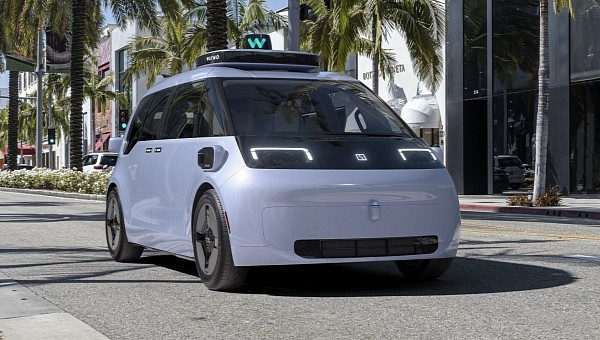Geely is preparing for a driverless future when cars are not developed around the driver. Its SEA-M architecture is built upon this concept and will underpin future Waymo One robotaxi and other self-driving vehicles.
ZEEKR brand has an interesting story, created by Geely to compete in the luxury EV segment against Tesla and NIO. Its first product, the ZEEKR 001, is based on the Lynk & Co Zero concept and is set to launch in Europe next year. In the meantime, ZEEKR has partnered with Alphabet (formerly Google) to develop Waymo’s robotaxis. Geely’s brand has taken its new role seriously and started working toward becoming a self-driving powerhouse.
We know ZEEKR made strides because Waymo One robotaxi prototypes already roam the streets. The Chinese company partnered with Mobileye for the driverless tech, aiming for SAE Level 4 autonomy. Nevertheless, the Waymo contract would not be able to sustain a business on its own, so ZEEKR is now developing a comprehensive range of autonomous vehicles. For that, it created a new architecture designed from the ground up for a driverless future.
The new platform is based on Geely’s Sustainable Experience Architecture (SEA) and, unlike other developments of this platform, does not take a driver into account. ZEEKR called it SEA-M, the M coming from Mobility. The Chinese company aims to use it for “a range of future mobility products including robotaxis, multi-purpose vehicles, and logistics vehicles.”
Getting rid of the driver allows designers to create an “intelligent room,” making full use of the space inside the cabin. ZEEKR describes how the future SEA-M-based vehicles would look: open seat choice and placement option, no B-pillar, and robust electrical/electronic (E/E) backbone supporting autonomous drive and connected devices. It also offers pictures of the Waymo One robotaxi that ZEEKR developed for Alphabet, in case it’s hard to imagine such a concept. This will be the first product built on the SEA-M platform.
The SEA-M’s advanced E/E backbone supports multifunctional screens which allow users to keep connected or be entertained on the road. ZEEKR claims the vehicles based on the new architecture will also be quite safe, aiming to meet “five-star global safety standards as well as Top Safety Pick requirements from the Insurance Institute for Highway Safety (IIHS).”
We know ZEEKR made strides because Waymo One robotaxi prototypes already roam the streets. The Chinese company partnered with Mobileye for the driverless tech, aiming for SAE Level 4 autonomy. Nevertheless, the Waymo contract would not be able to sustain a business on its own, so ZEEKR is now developing a comprehensive range of autonomous vehicles. For that, it created a new architecture designed from the ground up for a driverless future.
The new platform is based on Geely’s Sustainable Experience Architecture (SEA) and, unlike other developments of this platform, does not take a driver into account. ZEEKR called it SEA-M, the M coming from Mobility. The Chinese company aims to use it for “a range of future mobility products including robotaxis, multi-purpose vehicles, and logistics vehicles.”
Getting rid of the driver allows designers to create an “intelligent room,” making full use of the space inside the cabin. ZEEKR describes how the future SEA-M-based vehicles would look: open seat choice and placement option, no B-pillar, and robust electrical/electronic (E/E) backbone supporting autonomous drive and connected devices. It also offers pictures of the Waymo One robotaxi that ZEEKR developed for Alphabet, in case it’s hard to imagine such a concept. This will be the first product built on the SEA-M platform.
The SEA-M’s advanced E/E backbone supports multifunctional screens which allow users to keep connected or be entertained on the road. ZEEKR claims the vehicles based on the new architecture will also be quite safe, aiming to meet “five-star global safety standards as well as Top Safety Pick requirements from the Insurance Institute for Highway Safety (IIHS).”







